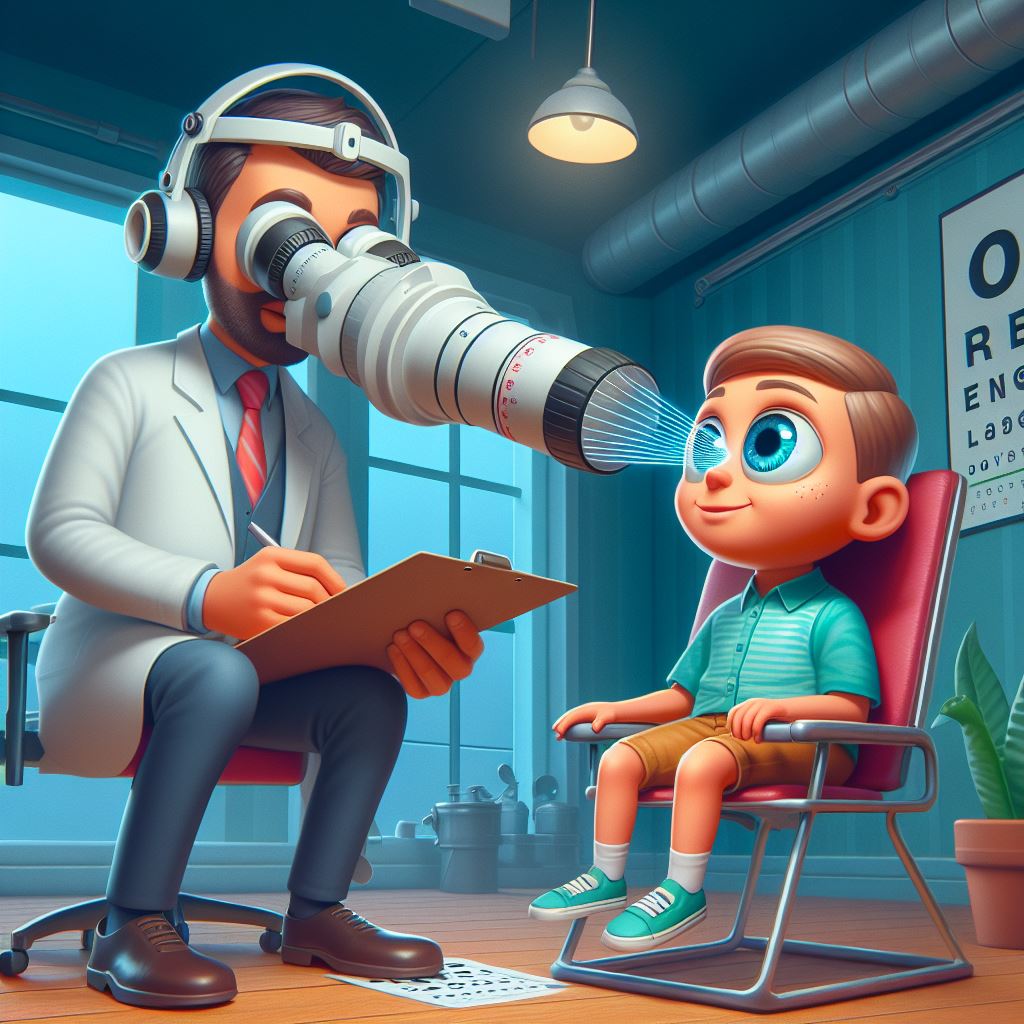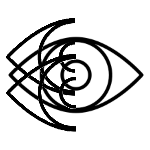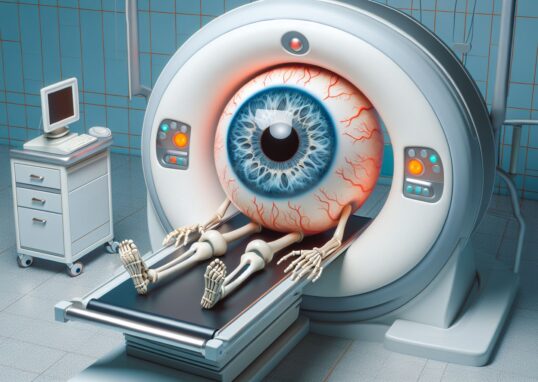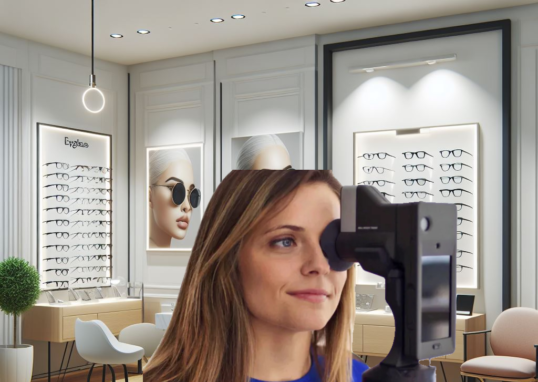
Introduction
Myopia, also known as nearsightedness, is a common vision condition where objects close to you appear clearly, but distant objects appear blurry. It’s important to understand that myopia can be caused by a variety of factors.
- Genetic Factors: If your parents have myopia, you’re more likely to develop it too. This is because the genes related to eye development can be passed down from parents to children.
- Environmental Factors: Spending a lot of time doing close-up activities, like reading or using a computer, can increase the risk of developing myopia. On the other hand, spending time outdoors and focusing on distant objects can help prevent myopia. The increasing prevalence of myopia, or nearsightedness, is a growing concern globally, especially among children. Changes in lifestyle, including more time spent indoors on screens and less time outdoors, have contributed to this trend.
Early detection and management are crucial to mitigating its progression and safeguarding children’s vision health, underscoring the need for regular eye examinations and awareness of this widespread issue.
The Role of Technology in Eye Care: Autorefractors
Autorefractors are special machines used by eye doctors to figure out your eyeglass or contact lens prescription. They work by shining a light into your eye and measuring how it changes as it bounces back. This gives the doctor a good idea of what kind of lenses you need to see clearly.
Here are some things you might want to know about autorefractors:
- How They Work: Autorefractors use a technology called “retinoscopy”. This involves shining a light into your eye and observing how it reflects off the retina, the back part of your eye. The way the light changes gives the machine information about your eye’s focusing power.
- What They Measure: Autorefractors can measure the curvature of your cornea, the clear front part of your eye. This helps determine if you have conditions like astigmatism. They can also measure how well your eye can focus light, which can tell if you’re nearsighted or farsighted.
- Different Models: There are many different models of autorefractors. Some are handheld, making them easy to use with children or people who have trouble sitting still. Others are larger and more complex, offering more detailed measurements for complex prescriptions.
Autorefractor technology is particularly useful for children as it provides a fast, non-invasive way to assess their vision, making eye exams more comfortable and accessible. The advancement of autorefractors in pediatric eye care represents a significant step forward in early detection and management of vision issues.
Studies on Autorefractor Accuracy
Recent studies, such as the one led by Lorri Wilson M.D., have critically evaluated the accuracy of autorefractors in detecting myopia in children under various conditions. These investigations reveal that certain autorefractors, specifically SVOne and Grand Seiko WAM, can closely match the accuracy of traditional cycloplegic retinoscopy, demonstrating a mean difference in measurements of less than 0.25 diopters. This level of precision is significant because it shows that autorefractors can offer reliable and swift assessments of children’s refractive errors, supporting the early detection and management of myopia. Here are more studies on this matter:
- A study titled “Effect of six different autorefractor designs on the precision and accuracy of refractive error measurement” published in PLOS ONE discusses the precision of objective refraction measurements with six different autorefractors1.
- Dr. Kristina Tarczy-Hornoch, an ophthalmologist at the Jules Stein Eye Institute, co-authored a study on the testability of Retinomax and IOLMaster ocular biometry in preschool children2.
- A study titled “Validation of a simple-to-use, affordable, portable, wavefront aberrometry-based auto refractometer in the adult population” published in BMC Ophthalmology validates the accuracy of a novel wave-front aberrometry-based auto refractometer3.
- According to a study published in Ophthalmology, there were approximately 1406 million people with myopia (22.9% of the world population) and 163 million people with high myopia (2.7% of the world population) in 20004.
Technical Aspects of Autorefractors
Advanced Technology: Autorefractors utilize cutting-edge technology to accurately measure refractive errors. By projecting a beam of light into the eye and analyzing its reflection off the retina, these devices calculate the precise correction needed for clear vision.
Sophisticated Features: These devices are equipped with features like infrared light for exact measurements and systems to account for eye movement and focusing errors, ensuring reliable assessments.
Impact on Pediatric Eye Care: The technical capabilities of autorefractors make them an invaluable tool in pediatric eye care, enabling quick and accurate identification of conditions like myopia.
Innovation Significance: The ongoing advancements in autorefractor technology highlight its significance in improving early detection and management of myopia in children, promising better vision health outcomes globally.
Clinical Application and Accessibility
Widening Access to Eye Care Autorefractors revolutionize pediatric vision screenings by their adaptability across various environments, from clinics to schools and remote communities. This technology democratizes eye care, especially in areas where specialists are scarce.
Streamlining Vision Screenings Their swift and user-friendly operation is ideal for efficiently screening large groups of children. This facilitates early detection of refractive errors like myopia, which is essential for timely intervention.
Global Impact on Vision Health By integrating autorefractors into global health initiatives, we can significantly advance early myopia detection and improve vision outcomes for children worldwide, marking a stride in public health.
Overcoming Barriers Despite challenges such as cost and accuracy limitations, the potential of autorefractors in enhancing early detection of vision issues in children remains vast, encouraging further innovation and research in this field.
Challenges and Limitations
Navigating the Hurdles While autorefractors are a breakthrough in pediatric eye care, they come with their own set of challenges and limitations that need to be addressed:
Accuracy Concerns Although autorefractors are generally accurate, they may sometimes provide slightly different results than a manual eye exam. This is especially true for complex prescriptions or certain eye conditions. More research is needed to improve their precision.
Cost Implications High-quality autorefractors can be expensive, which may limit their accessibility, especially in low-resource settings. Efforts are needed to make these devices more affordable without compromising on quality.
Training Requirements While autorefractors are designed to be user-friendly, proper training is still required to ensure accurate measurements. This can be a challenge in areas with limited access to professional training.
Adapting to Patient Needs Children, especially those who are very young or have special needs, may find it difficult to cooperate during an eye exam. Autorefractors need to be designed in a way that is child-friendly and accommodating of their needs.
By acknowledging and addressing these challenges, we can maximize the potential of autorefractors in improving pediatric eye care worldwide.
Future Directions and Innovations
Innovative Horizons in Eye Care The frontier of autorefractor technology is brimming with potential. Cutting-edge research is paving the way for enhanced precision and greater affordability, which could revolutionize pediatric eye care.
Portable Solutions Emerging portable autorefractor models promise to bring comprehensive eye exams to even the most remote locations, ensuring no child is left behind in receiving essential vision care.
Telehealth Integration The fusion of autorefractor technology with telehealth platforms is set to create a synergy that could provide real-time, expert analysis of eye exams, extending the reach of pediatric ophthalmologists globally.
A Vision for the Future These advancements are more than just technological triumphs; they represent a beacon of hope for millions of children at risk of myopia, offering a brighter future with clear vision.




